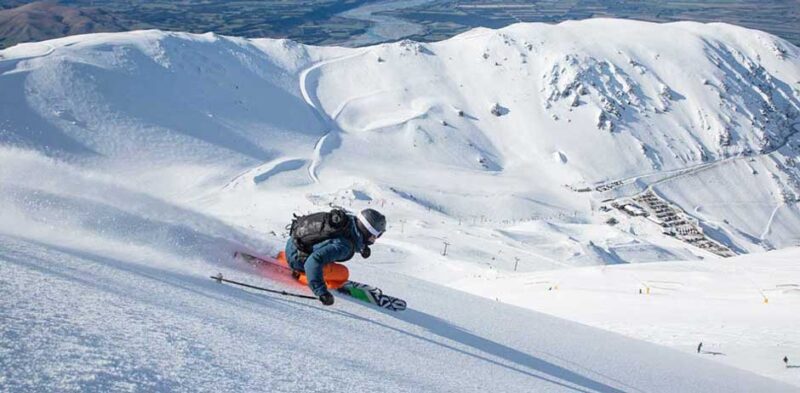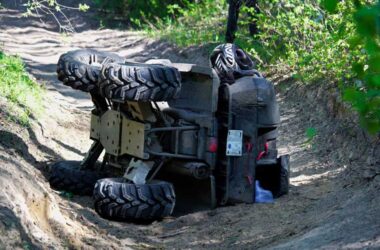New Zealand’s winter transforms its mountainous regions into breathtaking alpine playgrounds. From June to October, ski enthusiasts from around the world flock to the slopes of Queenstown, Wanaka, Mt Ruapehu, and Canterbury. But getting there often involves driving in conditions that can be vastly different from what many visitors are used to. Roads can be snowy, icy, and winding—especially those that lead to ski fields.
Whether you’re a local planning your annual snow trip or an international visitor chasing a Southern Hemisphere winter, understanding how to drive safely during New Zealand’s ski season is essential. This guide covers everything from winter road rules and car preparation to practical driving tips and FAQs, so you can hit the road with confidence.
Essential Road Rules for Winter Driving in New Zealand
New Zealand’s road rules are generally straightforward, but winter conditions bring extra considerations—especially in alpine areas.
- Drive on the left-hand side: If you’re visiting from overseas, remember New Zealanders drive on the left side of the road. This is crucial to keep in mind, particularly on narrow mountain roads.
- Give way and follow signage: Alpine and ski field access roads often include one-lane bridges and give-way signs. Always obey posted signs, including instructions about snow chains and road closures.
- Speed limits are not targets: During winter, even if the posted limit is 100 km/h on open roads, you should adjust your speed based on road conditions. Icy or snowy roads can be deceptively slick.
- Snow chains may be mandatory: Many ski fields require vehicles to carry and sometimes fit snow chains before accessing the ski access road. Always check the conditions and requirements before you go.
- No stopping in dangerous zones: Avoid stopping on bends or narrow shoulders. If visibility is low, use your hazard lights and pull over in designated stopping areas only.
How to Prepare Your Car for Snowy and Icy Conditions
Before heading out on your ski adventure, it’s important to ensure your vehicle is winter-ready.
- Hire a suitable vehicle: If you’re renting a car, choose one that is suitable for alpine driving. Many rental companies offer SUVs or 4WDs, and some allow you to add snow chains as part of your booking. For example, RaD Car Hire has branches near many ski regions and provides winter-ready vehicles on request.
- Check tyres and tread: Whether in a rental or your own car, tyres should have deep tread and be in good condition. Bald tyres reduce traction and increase the risk of skidding.
- Fit snow chains properly: Learn how to fit snow chains before you need to use them. Practise at home or ask your rental company for a demo. Snow chains are essential for traction on icy or snow-covered roads and are often legally required on ski field roads.
- Carry essential winter supplies: Pack items such as an ice scraper, blanket, flashlight, gloves, snacks, water, and a fully charged phone. In the rare case you get stuck or delayed, you’ll be prepared.
- Check your wipers and fluid: Ensure your windshield wipers are functioning well and that your washer fluid is rated for freezing temperatures.
Top Safety Tips for Driving to New Zealand’s Ski Resorts
Winter driving in New Zealand demands extra caution. Here are some practical tips to stay safe:
- Check the forecast and road conditions before leaving: Visit the NZ Transport Agency’s traffic and travel information site to view live road updates, closures, and weather conditions. Mountain weather can change rapidly, so check again on your return journey.
- Drive slowly and smoothly: Reduce your speed, especially around bends and downhill sections. Avoid sudden braking or accelerating, which can cause your vehicle to lose traction.
- Keep your distance: Icy roads require longer stopping distances, so leave extra space between your car and the one in front.
- Avoid black ice: Be especially cautious on bridges, shaded areas, and early mornings or late evenings when temperatures drop. These are prime areas for black ice, a near-invisible layer of ice that is very slippery.
- Don’t tailgate or overtake dangerously: On ski field roads, passing can be extremely dangerous. Wait until you are on a safe, flat, and visible stretch before overtaking—if at all.
- Use headlights in poor visibility: Turn on your lights even during the day when visibility is reduced by fog, snow, or low light.
- Respect closures: If a road is closed, don’t attempt to drive it. Turn back or wait for conditions to improve. Ski resorts will often update their websites and social channels with the latest road and lift status.
Conclusion
Driving in New Zealand during the ski season can be a magical part of your snow adventure—but only if done safely and responsibly. From mastering winter driving rules to preparing your vehicle with snow chains and emergency gear, there’s a lot to consider. Renting the right type of vehicle and staying informed about weather and road conditions can help ensure a smooth, enjoyable trip to the mountains.
With good preparation and common sense, the drive to New Zealand’s stunning ski fields can be just as memorable as the skiing itself.
Frequently Asked Questions
What if my car gets stuck in the snow?
If your car gets stuck, stay calm and avoid spinning the wheels—it can dig you in deeper. Use a shovel (carry one if possible) to clear snow from around the tyres. Fit snow chains if you haven’t already. You can also try using sand or a car mat for traction under the tyres. If you’re in a dangerous or isolated area, stay with your vehicle and call for roadside assistance.
How can I check road conditions before driving to a ski resort?
The best resource is the NZTA Journey Planner, which provides live updates on road conditions, closures, and traffic. Additionally, most ski fields have live webcams, access road updates, and snow reports on their websites and social media channels.
Are New Zealand ski roads dangerous?
Some roads, like those to the Remarkables or Turoa, can be narrow, steep, and icy. While they’re maintained regularly during ski season, they do require careful driving, especially in poor weather. Drive slowly, carry snow chains, and follow any signs or staff instructions at ski field checkpoints. If you’re not confident driving in alpine conditions, consider taking a shuttle from nearby towns.
Whether you’re carving powder on Coronet Peak or soaking in hot springs after a day at Mt Hutt, getting there safely is just as important as the adventure itself. Be prepared, drive responsibly, and enjoy New Zealand’s spectacular winter landscapes.








